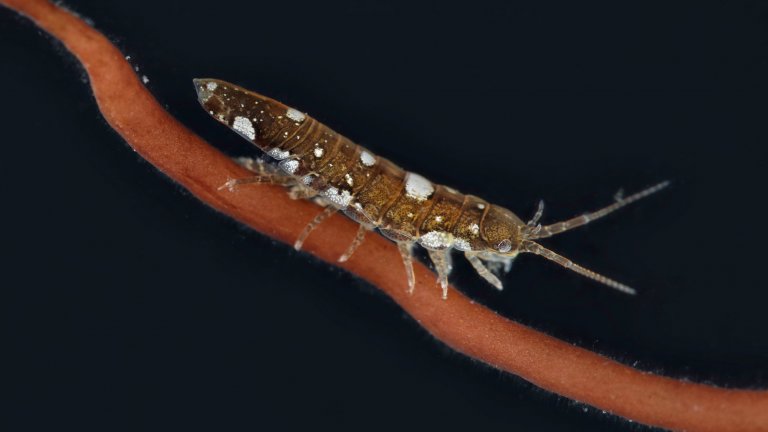
© Wilfried Thomas / Station biologique de Roscoff / SU / CNRS (CC-BY-NC-SA)
View the mediaScientific news
Are sea animals involved in the reproductive cycle of algae, like pollinating insects on dry land? A team led by a CNRS researcher at Roscoff Marine Station says yes, crustaceans known as idoteas contribute to the reproductive cycle of a red alga.

© Wilfried Thomas / Station biologique de Roscoff / SU / CNRS (CC-BY-NC-SA)
View the mediaIdoteas contribute to the fertilization of Gracilaria gracilis as they swim amid these algae. The surfaces of the male algae are dotted with reproductive structures that produce spermatia coated with mucilage, a sticky substance. As an idotea passes by, the spermatia adhere to its cuticle and are then deposited on the thalli of any female alga the crustacean comes into contact, thus helping G. gracilis reproduction.
But idoteas also stand to benefit in this arrangement. The seaweed gives them room and board: idotea cling to the algae as a protection from strong currents, and they munch on small organisms growing on their thalli. This is an example of a mutualistic interaction—a win-win situation for plant and animal alike—and the first time that an interaction of this kind between a seaweed and an animal has been observed.
They suggest that animal-mediated fertilization is much older than once thought.
Our work is guided by the way scientists question the world around them and we translate their research into images to help people to understand the world better and to awaken their curiosity and wonderment.